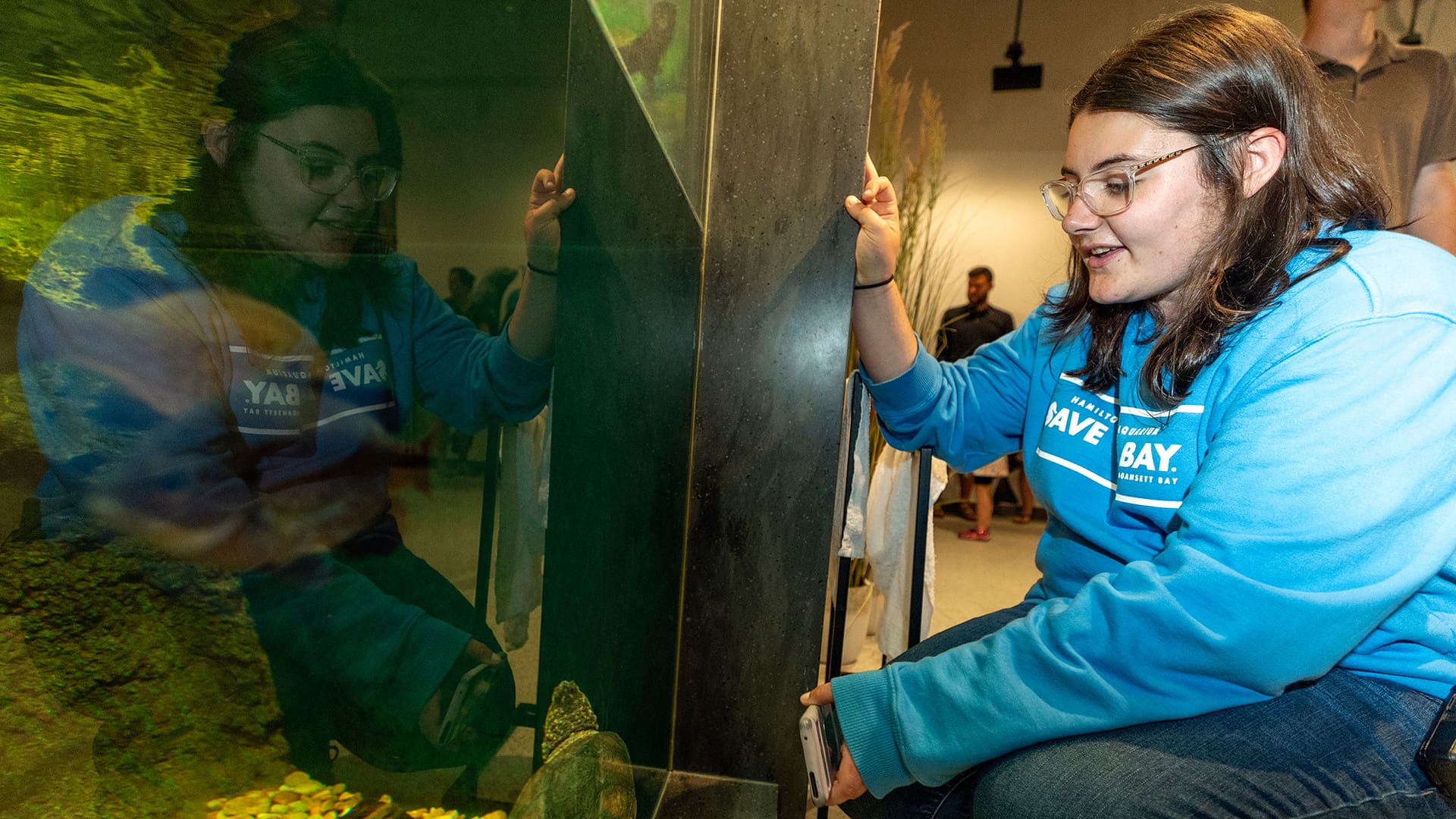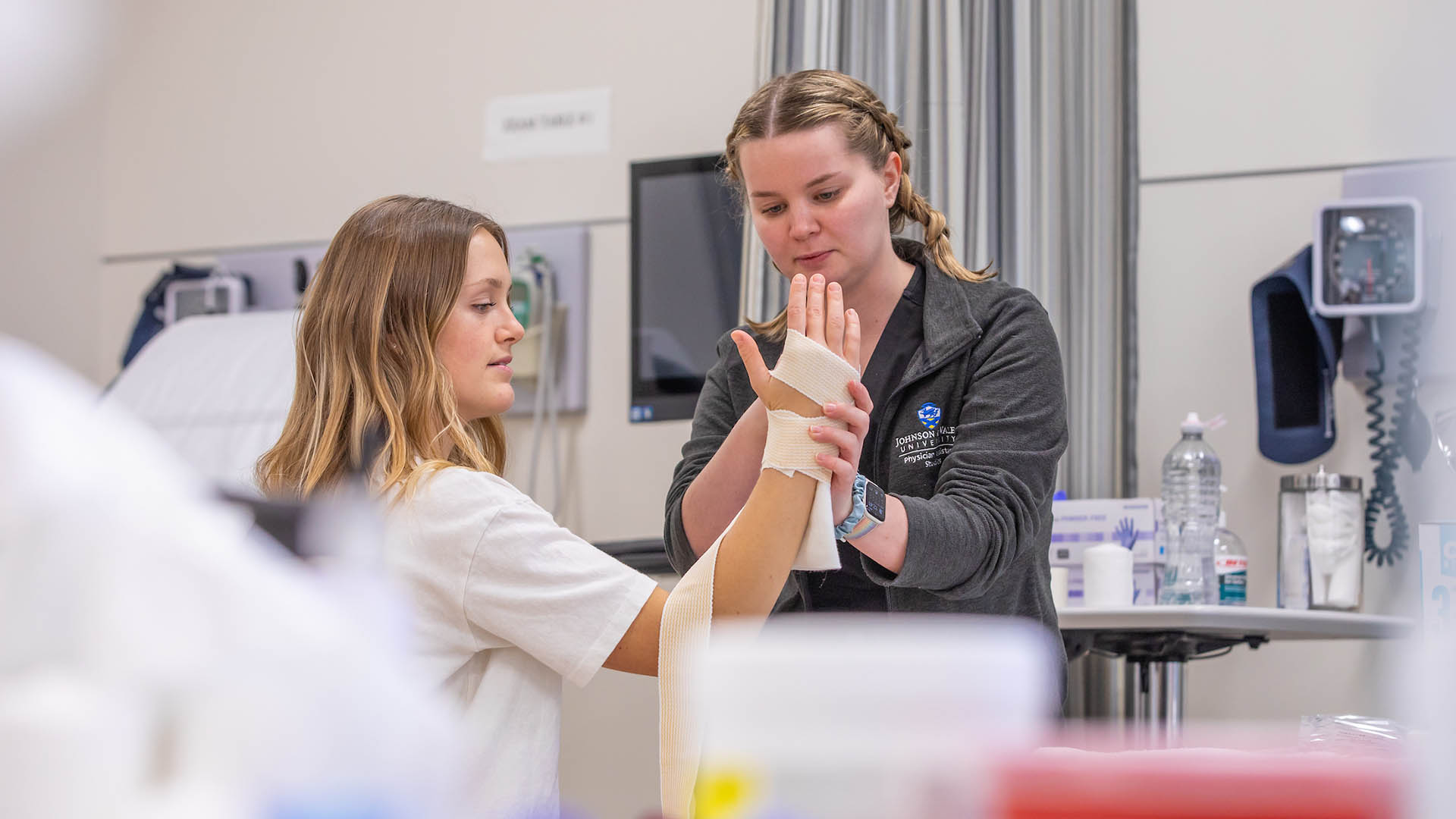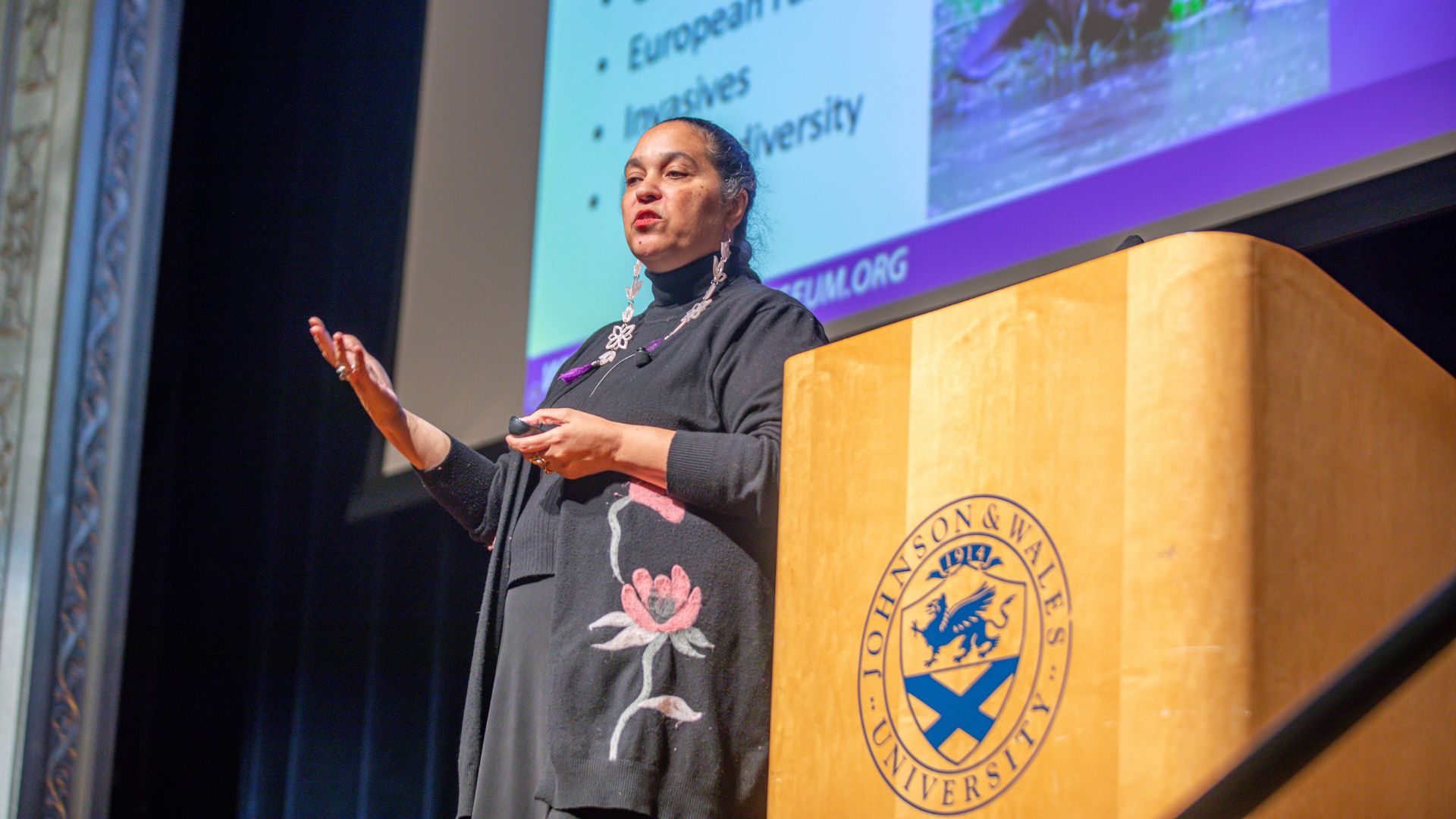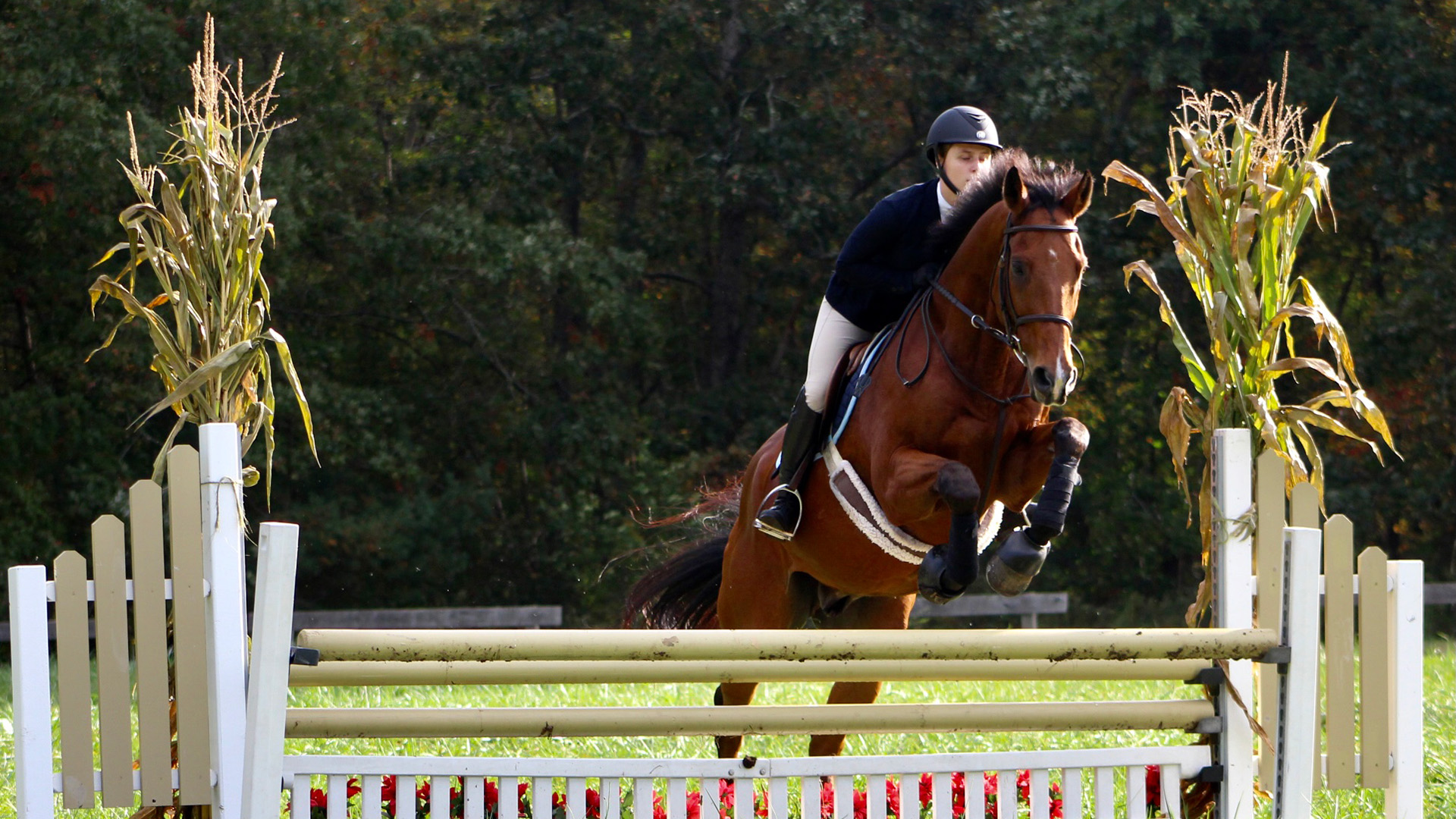Engineering Design and Occupational Therapy Students Find Common Ground Over Coffee
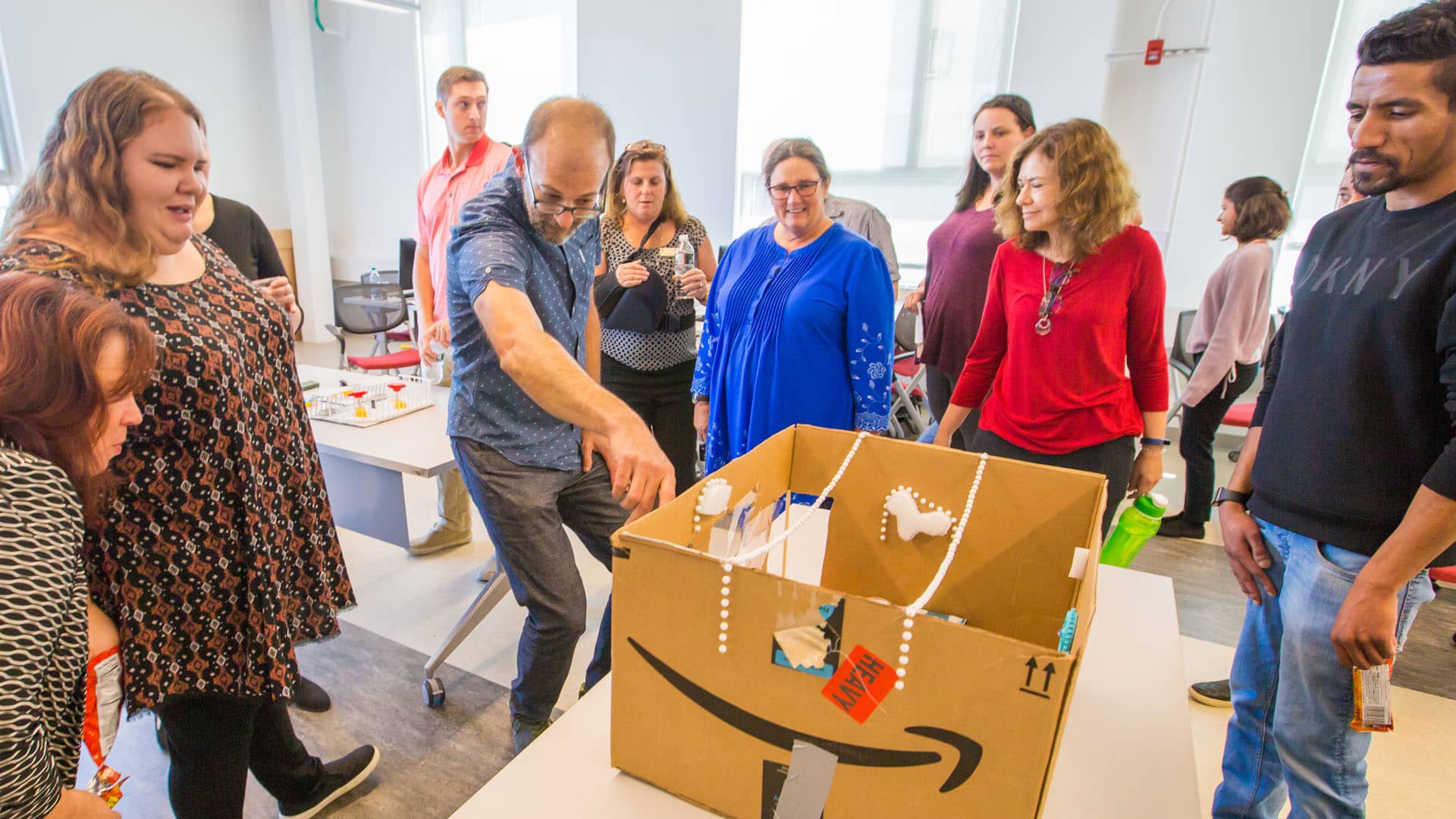
The connection between engineering design and occupational therapy might not seem obvious at first, but add a little coffee into the mix and things start to make sense. At least that’s what JWU faculty Amy Wagenfeld, Walter Zesk and Jonathan Harris were hoping for when they decided to have their classes meet over coffee for a unique collaboration focusing both on design and accessibility.
Wagenfeld, associate professor and capstone coordinator for JWU’s Occupational Therapy Doctorate (OTD) program led the groups. “Your task today is to think about how you can enhance the experience of drinking coffee,” she explains. “You’ll create a model coffee shop with the goal of maximizing the overall human experience by keeping in mind the social, physical, psychological and environmental experience people can have there.”
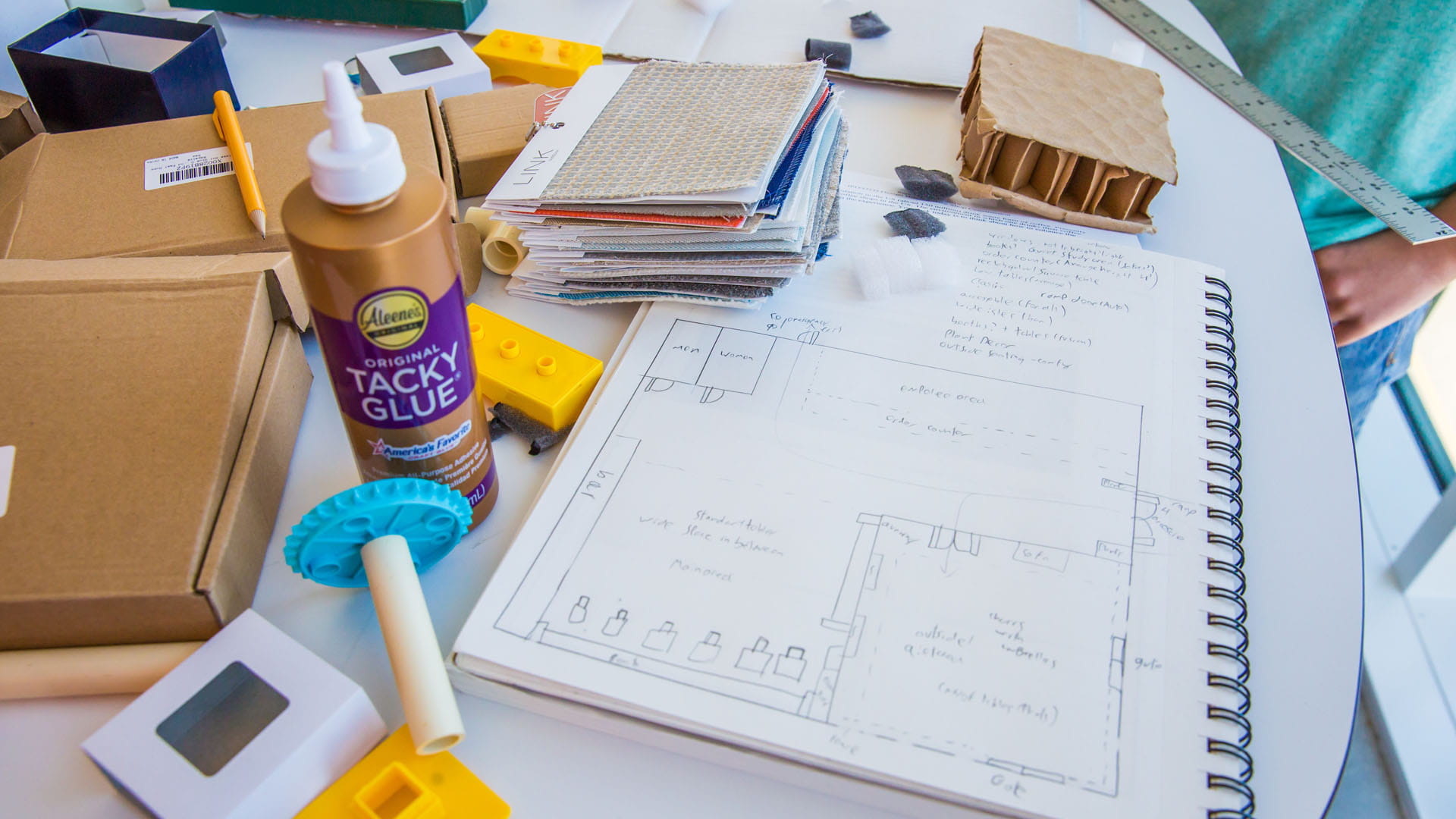
The 20 students, divided into six groups made up of design and occupational therapy students, had 30 minutes to draw and conceptualize their coffee shops and about 90 minutes to build the models using recycled materials such as cardboard, foam, plastic and fabric.
"I think this is an accessible experience, one that students can relate to."
Why a coffee shop?
“I think this is an accessible experience, one that students can relate to,” says Zesk. “There’s that immediate experience of going to get a coffee before class. But there’s also the cultural history experience of how coffee relates to family and to your life. And this is particularly relevant when you have students who come at it from very different backgrounds.”
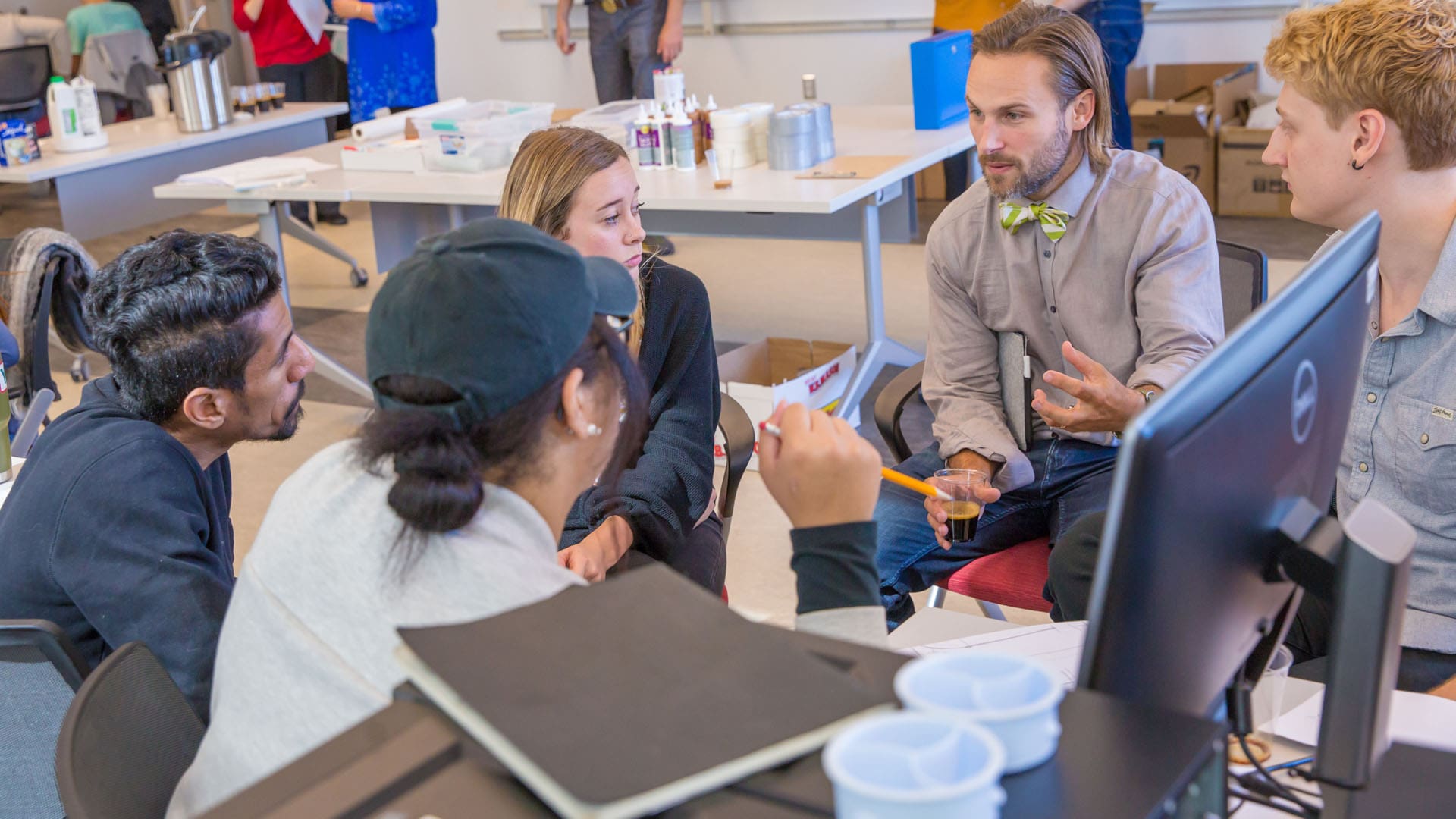
For inspiration during the class, Wagenfeld invited Charlie Fishbein, owner of the Coffee Exchange in Providence, to speak about his experiences in the coffee industry. Fishbein also shared some cold-brewed coffee from his shop with the group to set the mood. “Coffee has this marvelous place in our society. And we’re very proud of this coffee,” says Fishbein.
While conceptualizing their coffee shops, students considered everything from table heights to floor levels, textures and lighting, to line formation options, systems to visually alert customers about their orders, and more.
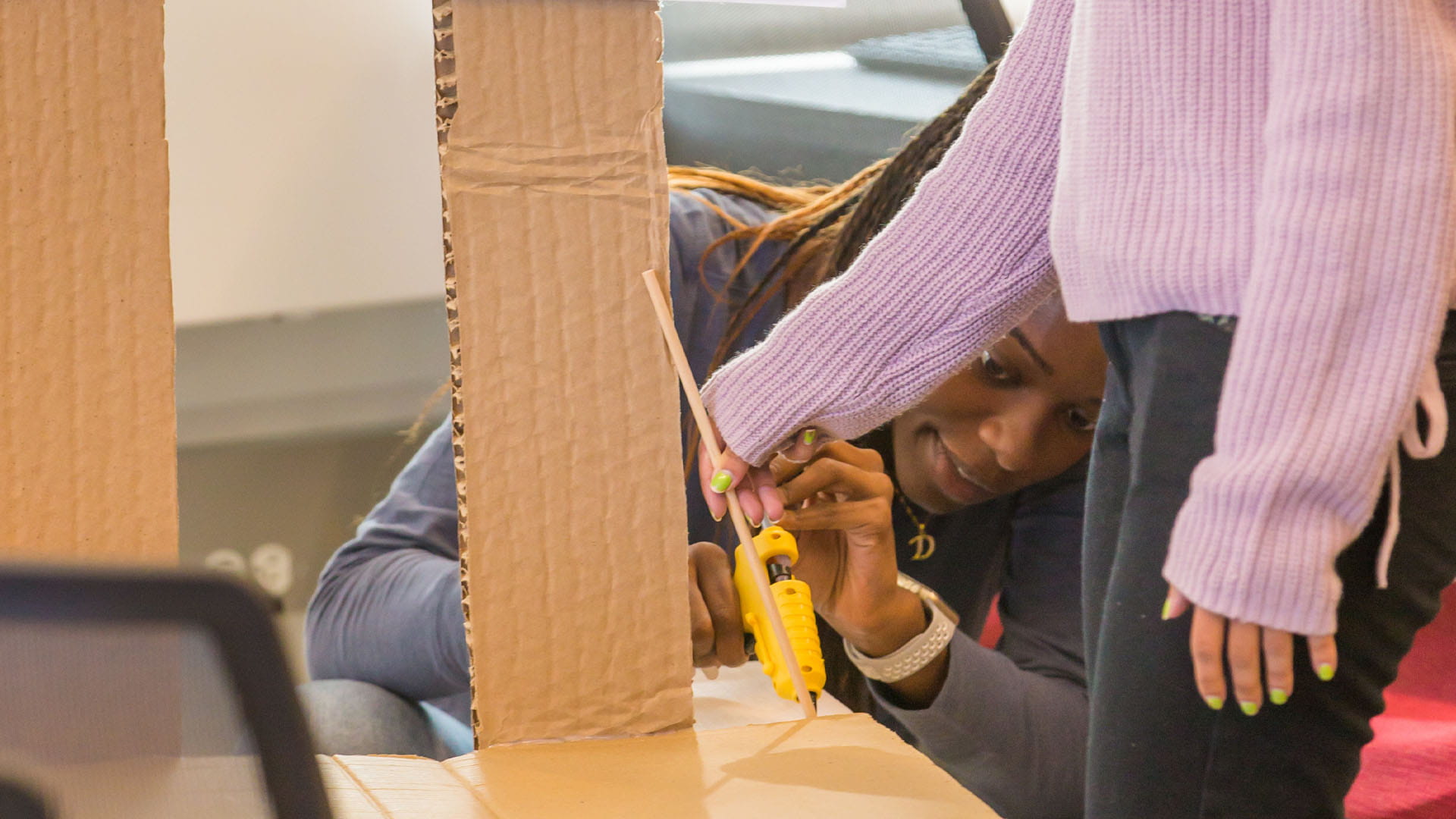
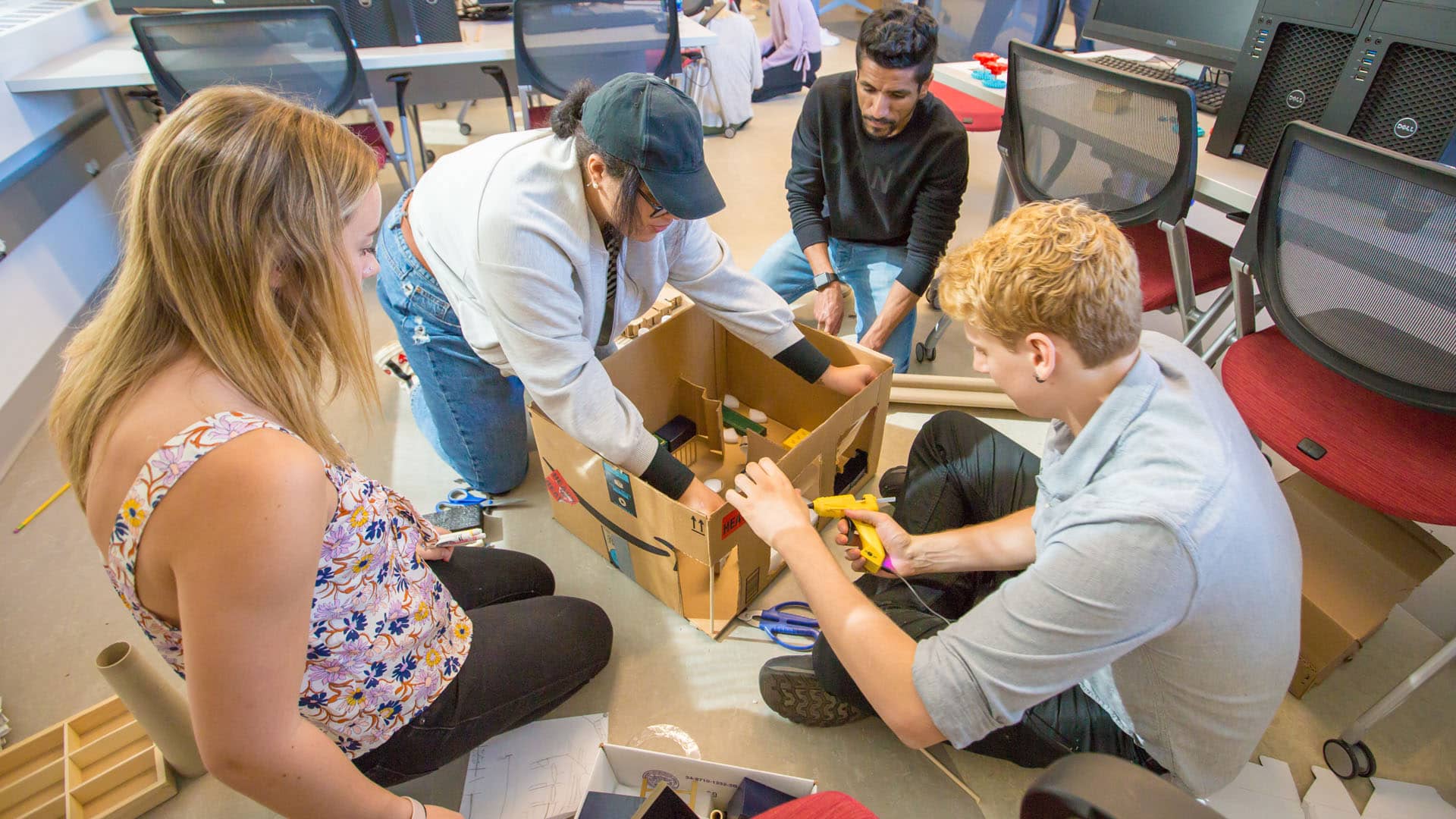
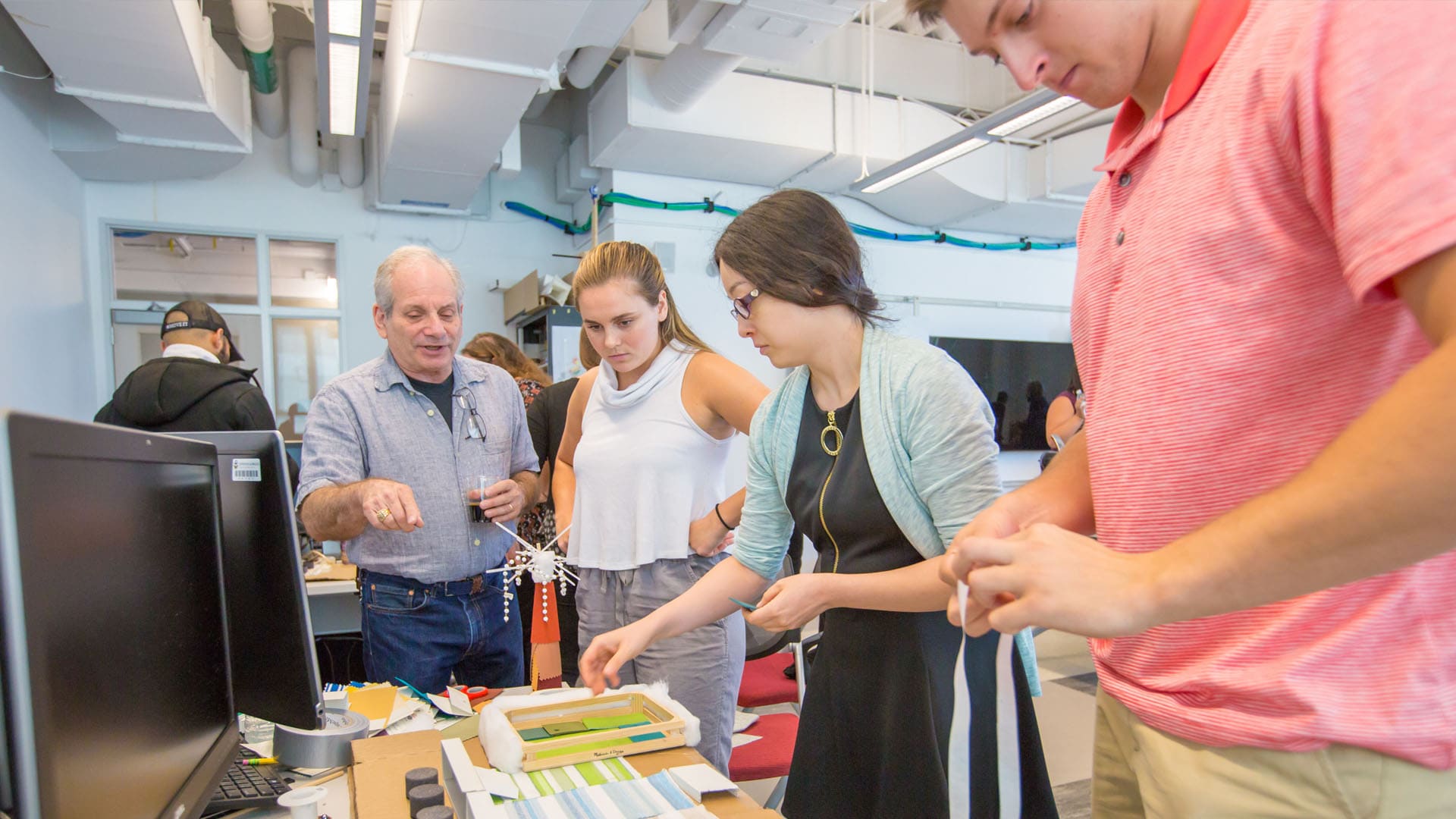
Group members Lydia Gruber '22 and Sukhman Matharu '22 (both OTD) and Dominique Scott '20 (Engineering Design & Configuration Management) focused their concept on accessibility for people in wheelchairs by creating a rollout shelf that would extend to the person at their level when their order is ready. They also came up with an idea for an electronic board that would visually display a person’s name, their order and the status of their drink. “Most of the coffee shops I go to, the only way they announce your drink is verbally,” says Gruber. “For someone that's hearing impaired or deaf, this would be a really cool thing.”
"It was so awesome to see everybody’s mind just work cohesively."
Seeing things from an accessibility perspective was eye opening for Scott, who usually finds solutions as a designer. “It's good to understand that a lot of people have different insights into what life is,” she says. “We got to collaborate and just bring our idea to life. And it was so awesome just to see everybody's mind just work cohesively.”
Will There be More Collaborations in the Future?
Engineering design and OTD students are not new to interdepartmental collaborations. And Harris, Zesk and Wagenfeld hope there are more opportunities like this in the future.
“I think that there's a place for occupational therapy and design [to work together], because we share a knowledge of the person and the environment,” says Wagenfeld. “Occupational therapy understands the human condition, we understand what the design really needs to be able to incorporate and focus on.”
For Zesk, these types of projects are key to student success at JWU. “We say yes to any kind of interdisciplinary collaboration, that's how we want to differentiate the experiences our students are having from the experiences that [students] are having in other schools.”
“The way that we are teaching design is in the service of human experience. We would never really design for design’s sake, which is very much connected with occupational therapy. All of our students could potentially go on to do occupational therapy doctorates, because that’s what we care about.”
Harris agrees. “Or the occupational therapists could go on to become the designers.”
